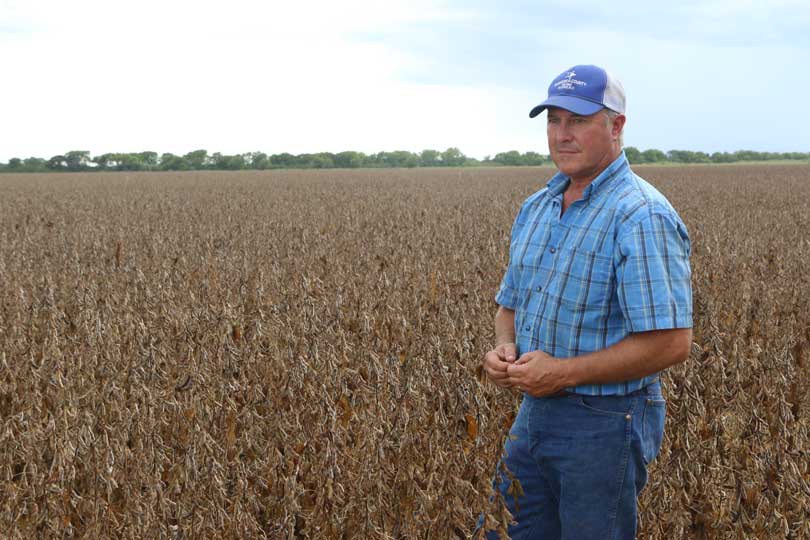By Justin Walker
Communications Specialist
Life in agriculture can be tough. Prices. Trade. Weather. The list goes on. But for third-generation farmer Carey Orsak, the hard times are just part of farming.
While it may be cliché, Orsak knows farming is in his blood. Even as a little boy on his grandpa’s farm, he was fascinated with tractors and wanted to be outdoors as much as he could.
“I learned at an early age that’s what I wanted to do,” Orsak, a Matagorda County native, said. “I think you have to be dedicated like that to make it in ag.”
Orsak has been making it in agriculture since he graduated in 1983. Today, he grows corn, cotton, grain sorghum, rice and soybeans.
“I’ve been growing soybeans since right out of high school,” he said. “Dad was always growing a few soybeans. Back in the early days, we planted group seven and eight. But we moved to a group four, which you plant earlier in the year to try and capitalize on the rainfall a little better.”
Soybean groups are determined by age or range, Orsak said. Group four can be planted earlier and mature faster, while seven and eight are planted later and subsequently mature later in the fall.
“They are used for the same thing—cooking oil and all the different things that soybeans are used for,” he said.
The shift in groups was mostly due to the climate they grow in. The area typically gets about 43 inches of rain, and beans require a lot of moisture to grow.
The crop was planted during a fairly dry spell, Orsak said. Planting usually takes place around the first of April and wraps up by the middle of the month.
That’s the way it’s been the past few years, Orsak said. It’s either very dry or very wet.
“The way I look at soybeans is kind of like playing the lottery in a way,” he said. “Some years, you don’t make much return. But on the years where you have really good yields, you can make a pretty decent income.”
Overall, Orsak says this was a pretty average year.
“Production average is about 40 bushels so far,” he said. “Some years we will have a 60-bushel crop. Some years, we will have a 20-bushel crop. Just depends on weather.”
Harvest had its share of difficulties this season, Orsak said. What started out as a really dry spell turned into a slew of showers, which is not ideal for harvesting soybeans.
“If you can see the rain coming, you just have to shut it down,” he said. “You want to keep going. You can cut through a little shower. But when that big rain comes, you have to shut it down.”
The rains have been rough this year, but not nearly as detrimental as the impact Hurricane Harvey had on last year’s crop.
“We were maybe a little more than halfway through with cotton and soybean harvest when Harvey hit,” he said.
After about 24 inches of rain fell on the fields, Orsak had lost roughly 10 bushels an acre and experienced a three-dollar dock on quality.
“Harvey was tough,” he said. “It was hard on everybody.”
Weather isn’t the only issue soybean growers have had to deal with this year. The ongoing trade war with China has impacted the crop’s success. While weather and trade have made for a challenging year in agriculture, Orsak couldn’t imagine doing anything else.
“It is just what I do,” he said. “I’m not very good at very many things, but I think I’m pretty good at growing crops, and I really enjoy it.”

